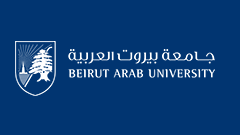Abstract
The spatial turn of the 20th century reshaped the examination of space in literary research, with works by De Certeau and Soja being some of the most prominent in that area. Numerous pieces of writing were revisited following the spatial turn, and Mahjar poetry was part of that reexamination. Indeed, Mahjar poetry is rife with spatial imagery, and Jawdat Haydar’s poems, four of which are the subject of this paper's analysis, are no exception. This paper argues that the representations of Lebanon and Baalbeck in Haydar’s poetry are self-conscious reconstructions created thanks to the speaker’s emotions, thoughts, and descriptions. By adopting Michel de Certeau’s theory on place and space and Edward Soja’s First and ThirdSpace, this paper examines the role of space in four of Haydar’s poems: “Lebanon” and “Baalbeck and the Ruins” from Voices and “Lebanon 1983” and “The Temple in Baalbeck” from Echoes. Indeed, in the poems of the first collection Voices, the speaker simply presents a static portrayal of the subject of description, whether it is Lebanon or Baalbeck. This depiction, however, becomes much more mobile in Echoes, where the speaker vitalizes the scenery and invites the reader to take part in these reconstructions. Thus, the shift from Voices to Echoes presents a transition from a static subject of description to a much more dynamic one, which clearly shows the speaker’s active involvement in the production of the spatial imagery of his country and homeland.
Keywords
space studies, place, Thirdspace, Jawdat Haydar, Mahjar poetry, Lebanese Anglophone literature, Arab Anglophone literature
Recommended Citation
Whaibeh, Emile and Matta, Elie
(2021)
"PLACE, SPACE, AND THIRDSPACE IN SELECTED POEMS BY JAWDAT HAYDAR,"
BAU Journal - Society, Culture and Human Behavior: Vol. 3:
Iss.
1, Article 13.
DOI: https://doi.org/10.54729/2789-8296.1076

